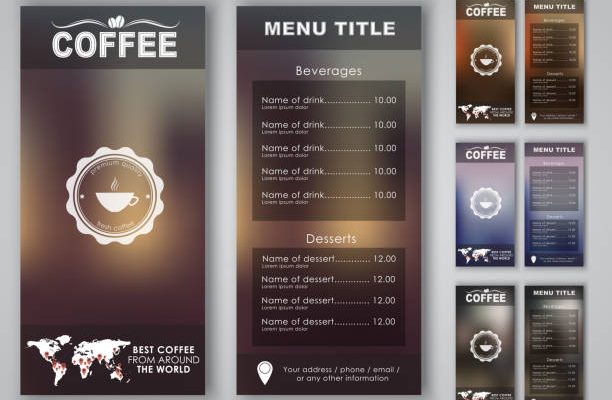You can have a lot of fun if you know what to look for. This is the place.
Restaurant owners know that creating the perfect dish only represents half of the battle. It is also important to have a campaign that not just showcases the culinary delights but also tells a story and evokes emotions.
The most successful establishments are not those that offer well-thought-out menus. They are the ones who create connections, tell stories, promise experiences, and have a strong sense of community.
Every strategy has the potential to be a gateway to a memorable dining experience. The key to creating a unique campaign is to use nostalgia, humor, or innovative ideas.
Restaurant Marketing Campaign Ideas
Here are some creative marketing ideas for restaurants to elevate your brand narrative in the digital age.
1. Limited Time Specials
They create an urgency and FOMO.
That’s not it. Specials that are only available for a limited time allow restaurants to try out new dishes before committing to a permanent menu change. This flexibility may lead to innovative creations that could become bestsellers.
These specials will generate media coverage and online discussion, positioning your restaurant as dynamic and ever-changing. A data collection benefit is also available: by tracking the most popular specials, you can gain insights into seasonal trends and customer preferences.
Interactive Experiences
Interactive events can be used to position restaurants as hubs of entertainment and learning rather than just a place for dining. The increased brand awareness can increase patronage, as customers are looking for multi-faceted experiences.
These interactive events can turn attendees into mini-brand ambassadors who share their experiences, potentially bringing new customers in through word of mouth.
Spotlight on local ingredients
Local ingredients can not only help you achieve sustainability but also save money by reducing your supply chain.
Local partnerships that are authentic can increase brand loyalty by making customers feel like they’re helping their community.
Every local ingredient has a story, and stories form the basis of successful marketing campaigns. They make a brand more relatable and human.
4. Social Media Challenges
Social media challenges are a great way to reach a wide audience. Customers who engage in a social media challenge are not only interacting with their restaurant, but they also broadcast their participation to their entire following with user-generated material.
This can have a ripple effect that can increase brand awareness and align with marketing goals, such as promoting new dishes or highlighting brand values.
Themed Nights
Themed nights have a double advantage. They provide differentiation in an oversaturated market. A unique theme can attract potential customers in a city with many dining options. Themed nights also encourage return visits.
Customers may visit only once a week, but if a theme is important to them (such as a monthly mystery meal), they will be more likely to return. These events can also lead to larger ticket prices, as customers will often spend more on these unique experiences.
Best Marketing Campaign Examples for Restaurants
These top eight food marketing campaigns, which combine culinary creativity and strategic storytelling, have not only whetted the appetites of consumers but also made an indelible impression on the industry. Let’s take a look at each one.
1.McDonald’s All Day Breakfast
McDonald’s recognized that breakfast’s appeal wasn’t limited to the mornings. To create anticipation, the brand launched the AllDayBreakfast Campaign directly on Twitter, where it received 9,500 favorite tweets and 7,900 retweets within 13 hours.
Golin was their PR agency. They emphasized listening and customer engagement, which enhanced McDonald’s caring image. They spread the message “We hear you” on various digital platforms, from YouTube to Instagram. The phrase “It’s about Time” resonated with thousands of people instantly.
2. Domino’s – Paving for pizza
This campaign was very successful with the target audience, even though it seemed to be a bit out of the core service offered by the restaurant. Domino’s humorously highlighted a common problem that all delivery food consumers face: jostling food because of bad roads.
The Paving for Pizza campaign promised to repair these potholes. They went beyond just selling pizzas. They were selling a promise, an experience. Media coverage and goodwill from customers underscored the importance of digital marketing that goes beyond the box:
3.Taco Bell-Belluminati
Taco Bell created a story that was a blend of popular culture and mystery by focusing on themes. They didn’t just promote a value-oriented menu; they also created a storyline, the Illuminati, which invited customers into an exclusive secret.
This campaign was a great example of the power story-driven marketing has in making the dining experience seem larger than life.
4. Burger King – Whopper Detour
Burger King’s clever challenge to its biggest competitor by setting the order condition as being near a McDonald’s not only promoted its app but also promoted it!
Whopper Detour is a great example of how location-based marketing, coupled with a strong sense of FOMO and sharp marketing, can create traction and engagement.
5. Olive Garden – Never Ending Pasta Bowl
Olive Garden’s campaign, which was inspired by the concept of “limited-time specials,” is a great example of how to offer diners a value that cannot be matched. They transformed the dining experience into an endless culinary adventure instead of just serving pasta. In fact, the Never Ending Pasta Bowl campaign is a current phenomenon, with a 2023 strikeback.
This strategy had two aspects: it was brilliant in attracting diners who were looking for value, and it positioned the brand both as generous and innovative. What is the takeaway? In a competitive restaurant market, delivering unmatched value is a key factor.




















Comments